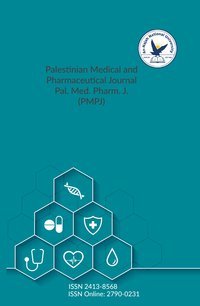Perception and factors associated with patient safety culture in an academic university hospital in Palestine
Authors:
Article info
2023-09-27
2023-10-19
None - None
Keywords
- Palestine.
- Safety
- HSOPSC
- Patient Safety Culture
Abstract
Background: Patient safety culture plays a pivotal role in enhancing care quality, preventing errors, promoting clinical outcomes, and reducing healthcare costs. It also helps minimize adverse events, increasing patient safety, and elevating the quality of medical care provided. This study aims to evaluate the perception of patient safety culture within a university hospital. It aims to examine the correlation between the demographic and workplace characteristics of the staff and their perceptions of patient safety culture. Methods: A quantitative cross-sectional study design was employed for this study. The Arabic version of the Hospital Survey of Patient Safety Culture (HSOPSC) v2.0 was used to evaluate the perception of patient safety culture among hospital staff. The survey was distributed to all staff via email using the SurveyMonkey® online platform over two weeks. Descriptive statistics were used to measure the perception. The relationship between variables was determined using the Mann-Whitney U test, Kruskal-Wallis test, and multiple linear regression. Results: “Staffing and Workplace” (59.5%) and “Response to Error” (51.9%) were found the weakest composites. “Teamwork” (82.5%), and the “Organizational Learning—Continuous Improvement” (81.1%) were the highest positive composites. The rest of the composites were perceived positively. Nursing staff perceived the patient safety culture more positively than other professions (Mean Rank = 157.23, p-value. Conclusions: This study presents an assessment of patient safety culture among healthcare staff at a university hospital. The staff perceived the overall patient safety culture positively. However, efforts must be made to improve the two weak composites. A qualitative approach study could be done to explore deeply the reasons for this weakness in these composites. The demographics of the staff were not associated with patient safety culture.
Perception and factors associated with patient safety culture in an academic university hospital in Palestine
المؤلفون:
معلومات المقال
2023-09-27
2023-10-19
None - None
الكلمات الإفتتاحية
- Palestine.
- Safety
- HSOPSC
- Patient Safety Culture
الملخص
Background: Patient safety culture plays a pivotal role in enhancing care quality, preventing errors, promoting clinical outcomes, and reducing healthcare costs. It also helps minimize adverse events, increasing patient safety, and elevating the quality of medical care provided. This study aims to evaluate the perception of patient safety culture within a university hospital. It aims to examine the correlation between the demographic and workplace characteristics of the staff and their perceptions of patient safety culture. Methods: A quantitative cross-sectional study design was employed for this study. The Arabic version of the Hospital Survey of Patient Safety Culture (HSOPSC) v2.0 was used to evaluate the perception of patient safety culture among hospital staff. The survey was distributed to all staff via email using the SurveyMonkey® online platform over two weeks. Descriptive statistics were used to measure the perception. The relationship between variables was determined using the Mann-Whitney U test, Kruskal-Wallis test, and multiple linear regression. Results: “Staffing and Workplace” (59.5%) and “Response to Error” (51.9%) were found the weakest composites. “Teamwork” (82.5%), and the “Organizational Learning—Continuous Improvement” (81.1%) were the highest positive composites. The rest of the composites were perceived positively. Nursing staff perceived the patient safety culture more positively than other professions (Mean Rank = 157.23, p-value. Conclusions: This study presents an assessment of patient safety culture among healthcare staff at a university hospital. The staff perceived the overall patient safety culture positively. However, efforts must be made to improve the two weak composites. A qualitative approach study could be done to explore deeply the reasons for this weakness in these composites. The demographics of the staff were not associated with patient safety culture.
An-Najah National University
Nablus, Palestine
Nablus, Palestine
- P.O. Box
- 7, 707
- Fax
- (970)(9)2345982
- Tel.
- (970)(9)2345560
- (970)(9)2345113/5/6/7-Ext. 2628
- [email protected]
- EIC
- Prof. Ismail Warad
